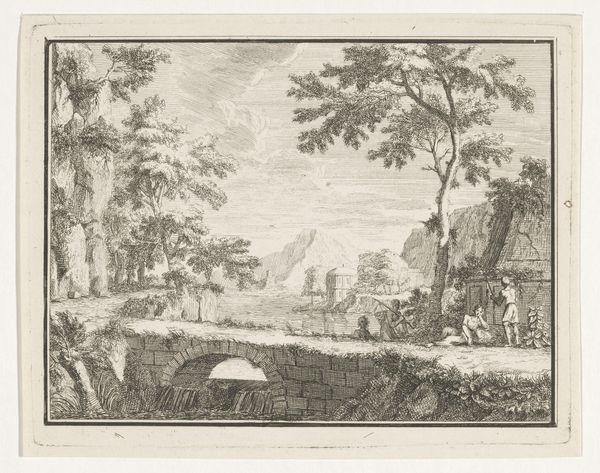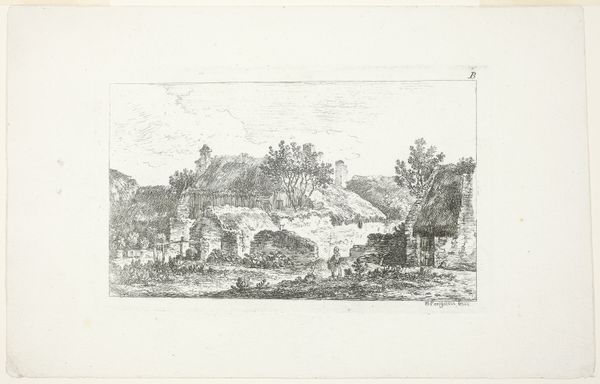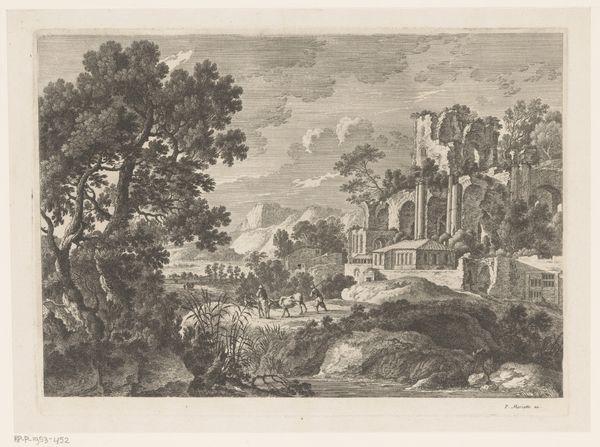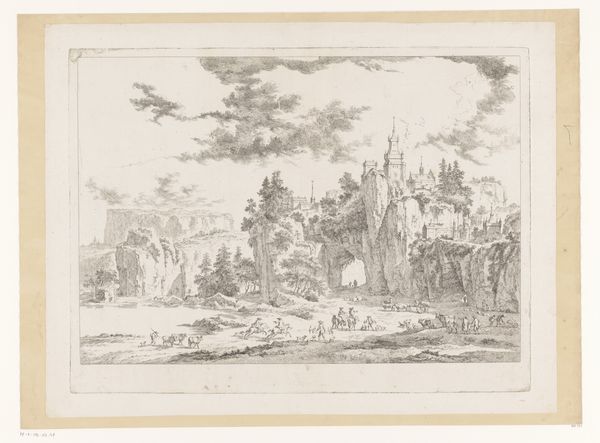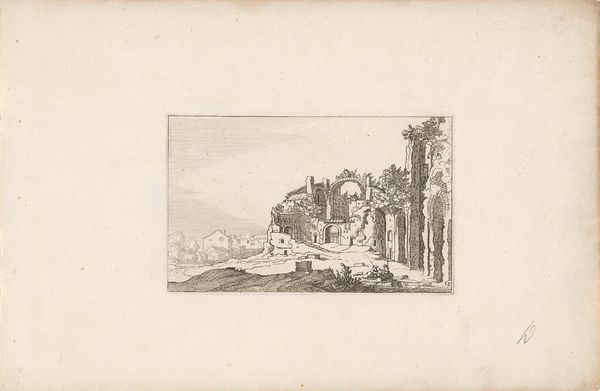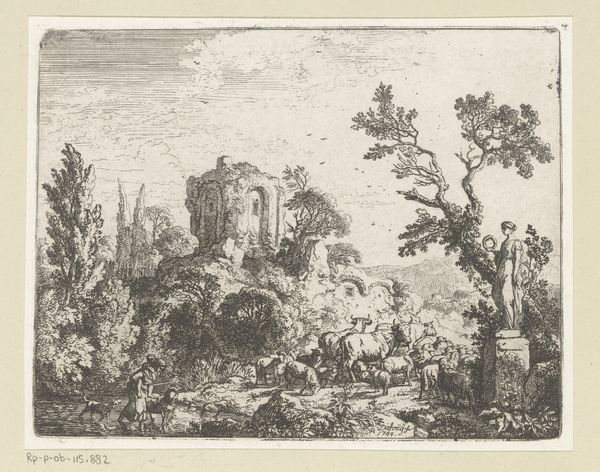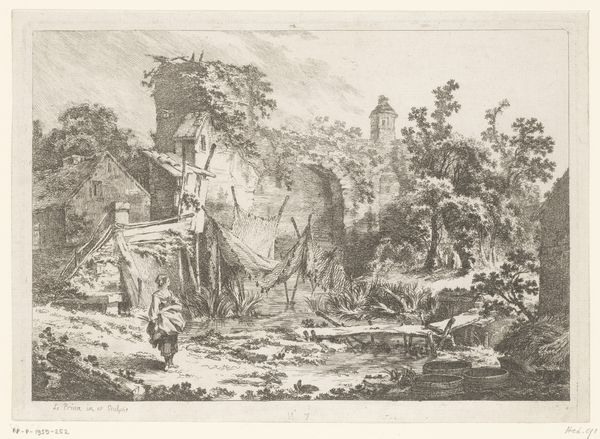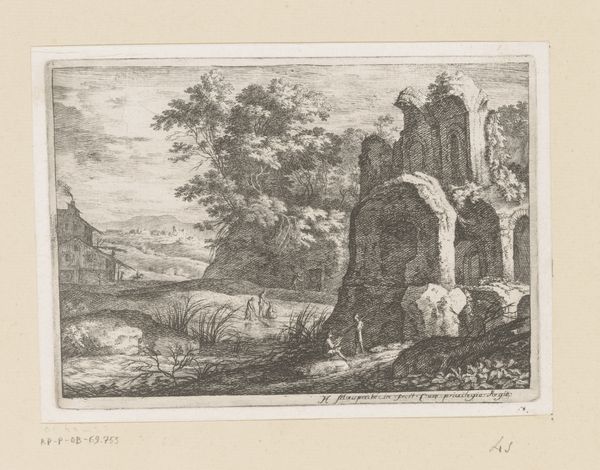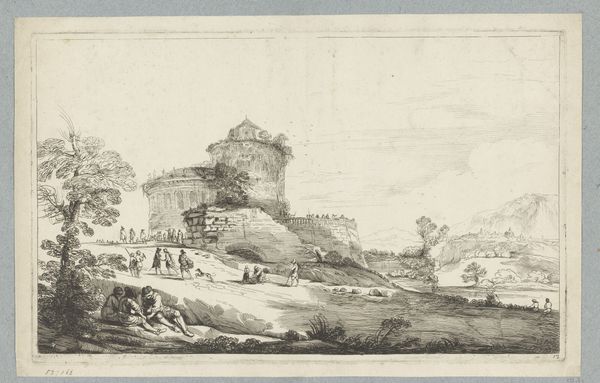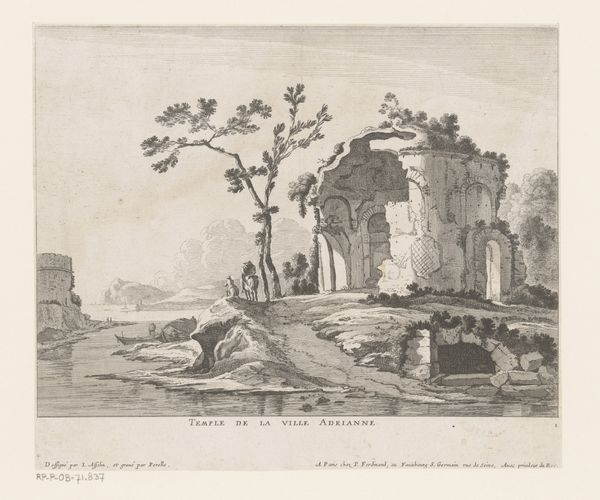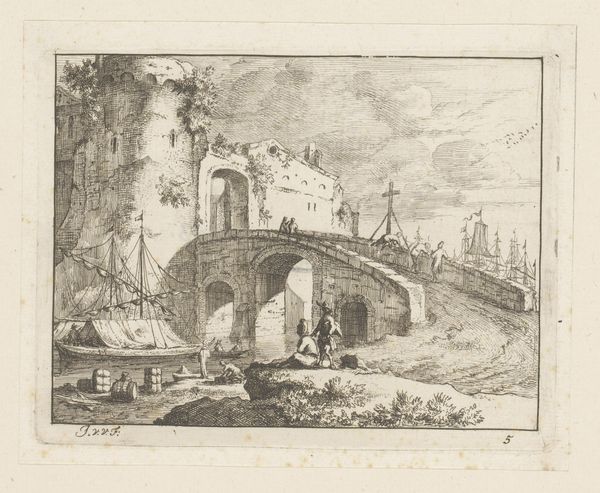
etching
#
baroque
#
etching
#
landscape
#
etching
#
genre-painting
Dimensions: height 425 mm, width 590 mm
Copyright: Rijks Museum: Open Domain
Curator: This is "Rivierlandschap met vervallen burg," or "River Landscape with Ruined Castle," an etching by Claude Henri Watelet, dating roughly from 1728 to 1786. It's part of the Rijksmuseum's collection. Editor: My first thought is melancholy. The monochrome palette combined with the ruined structure certainly evokes a sense of the passage of time and the transience of human endeavor. Curator: Absolutely. And consider the symbolism of ruins during this period. Watelet, drawing on Baroque sensibilities, uses this imagery to comment on power, history, and perhaps the fragility of empires. It's also a nod towards idealized nature overtaking constructed environments. Editor: I’m particularly drawn to the detail in the water. Notice how Watelet captured the reflections, almost mirroring the human figures, livestock, and the castle’s structure. Water often serves as a powerful symbol of reflection, renewal, but also unconscious depths. The composition forces a dialogue between reality and illusion. Curator: Yes, and if we contextualize this landscape within 18th-century French society, the figures by the river – seemingly common folk, peacefully coexisting alongside signs of aristocratic decline – introduces complex social and political implications. The landscape isn't just scenery; it's a site of intersecting social realities. Editor: Do you think Watelet deliberately used the ruin as a kind of memento mori? The decaying structure amidst the vibrancy of nature makes one contemplate not only the futility of grand human schemes, but perhaps speaks to individual mortality as well? Curator: That's quite astute! The ruin becomes a visual reminder that even the mightiest structures crumble, reinforcing themes of societal transformation, as class structures faced a shift in power during the artist's lifetime. His portrayal isn't simply picturesque; it actively engages with unfolding social discourse. Editor: It's been fascinating to peel back some layers and understand how this river landscape reflects on personal experience and socio-historical currents. Thank you for helping me to read this image. Curator: My pleasure. The power of this seemingly simple artwork truly resides in its interwoven narratives.
Comments
No comments
Be the first to comment and join the conversation on the ultimate creative platform.
